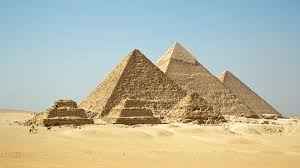The Seven Wonders of the World are iconic structures that symbolize the extraordinary creativity, skill, and ambition of human civilizations throughout history. These erswond are divided into two lists: the Seven Wonders of the Ancient World, and the New Seven Wonders of the World, which were selected through a global poll in 2007 organized by the New7Wonders Foundation.
-
The Original Seven Wonders of the World
The original Seven Wonders of the Ancient World were compiled by Greek historians. They include:
-
The Great Pyramid of Giza (Egypt) – The only surviving wonder of the ancient list, it was built around 2560 BCE and remains an architectural marvel.
-
The Hanging Gardens of Babylon (Iraq) – Said to be an extraordinary series of terraced gardens, though its existence is debated.
-
The Statue of Zeus at Olympia (Greece) – A massive statue celebrating the Greek god Zeus, created by sculptor Phidias.
-
The Temple of Artemis at Ephesus (Turkey) – A grand temple dedicated to the goddess Artemis, known for its magnificent art and size.
-
The Mausoleum at Halicarnassus (Turkey) – A grand tomb built for Mausolus, a Persian governor.
-
The Colossus of Rhodes (Greece) – A giant bronze statue representing the sun god Helios.
-
The Lighthouse of Alexandria (Egypt) – One of the tallest man-made structures of the ancient world, guiding sailors safely to harbor.
These ancient wonders reflect the engineering skills and artistic creativity of ancient civilizations. Sadly, except for the Great Pyramid, all others were destroyed by natural disasters or human actions over time.
Ancient Marvels That Stood the Test of Time
In 2007, a new list was created to honor global architectural and cultural heritage. The New Seven Wonders of the World are:
-
The Great Wall of China (China) – A vast defensive wall stretching over 13,000 miles, built over centuries to protect Chinese territories.
-
Petra, Jordan’s Ancient Wonder – A rose-red city carved into rock cliffs, known for its elaborate architecture and water management systems.
-
Brazil’s Iconic Christ Statue – A colossal statue of Jesus Christ overlooking Rio de Janeiro, symbolizing peace and Christianity.
-
Machu Picchu in the Andes– An ancient Incan city in the Andes Mountains, famous for its stunning location and preserved ruins.
-
Chichen Itza (Mexico) – A major Mayan city with impressive pyramids and astronomical significance.
-

pyramid The Roman Colosseum (Italy) – A grand amphitheater in Rome, used for gladiator contests and public spectacles.
-
The Taj Mahal (India) – A white marble mausoleum built by Emperor Shah Jahan in memory of his wife Mumtaz Mahal.
These wonders represent a blend of ancient and more recent achievements across different cultures and continents. They are not only tourist attractions but also symbols of history, culture, and the enduring legacy of human innovation.
In conclusion, the Seven Wonders of the World, both ancient and new, stand as timeless reminders of what humanity can achieve through vision, determination, and craftsmanship. They inspire awe and admiration, bridging the past and present across civilizations.
